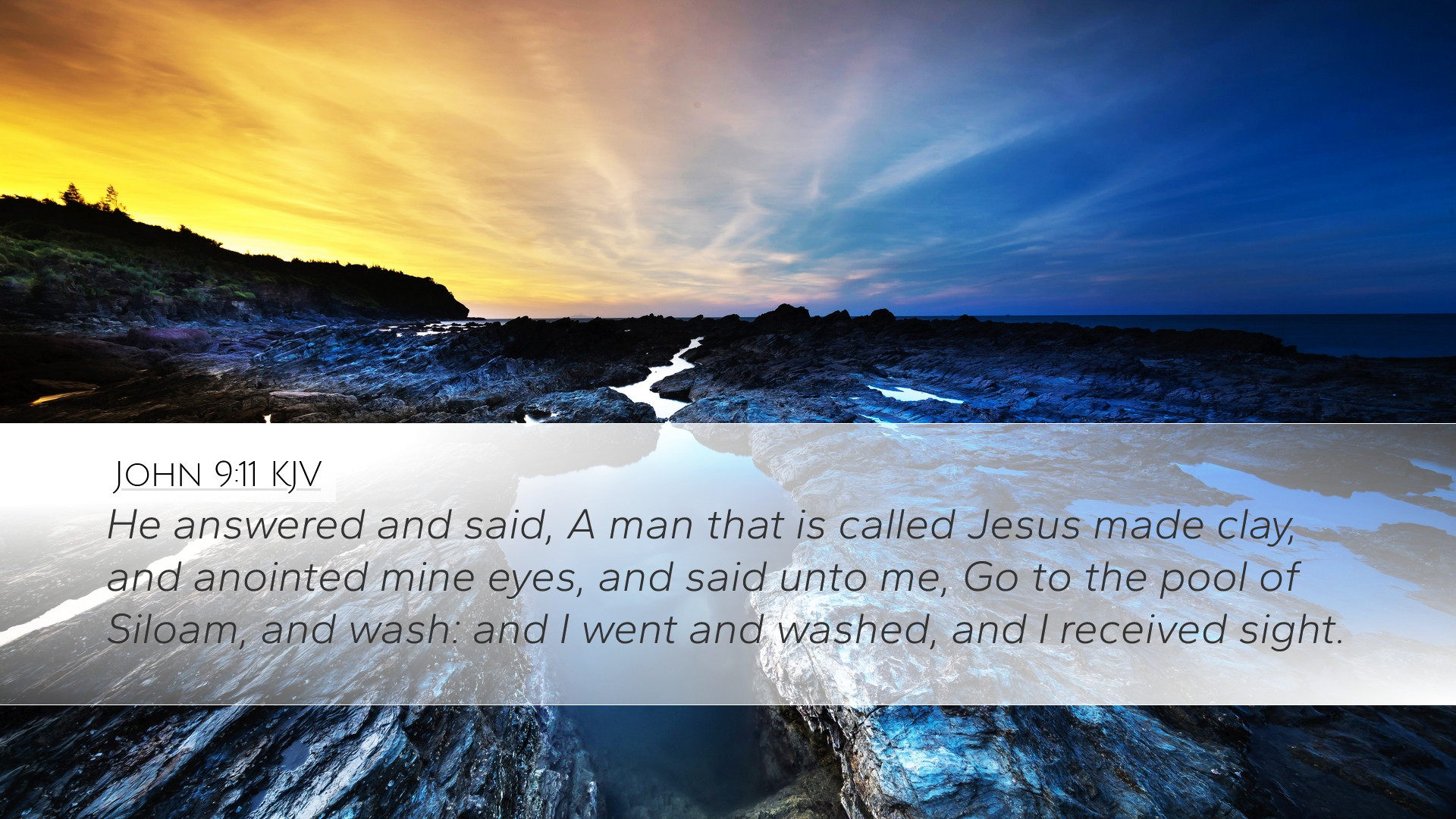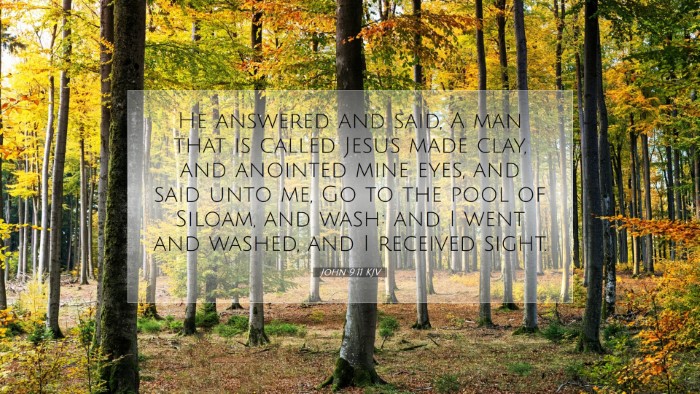Commentary on John 9:11
Bible Verse: John 9:11 - "He answered and said, A man that is called Jesus made clay, and anointed mine eyes, and said unto me, Go to the pool of Siloam, and wash: and I went and washed, and I received sight."
Introduction
This verse belongs to the narrative of Jesus healing a man born blind, recorded in the ninth chapter of the Gospel of John. It encapsulates themes of divine intervention, faith, and the revelation of spiritual sight.
Contextual Background
In ancient times, the act of healing, particularly involving miraculous works, was a significant attribute of the Messiah. This passage illustrates the manifestation of Jesus's divine authority and compassion.
Detailed Commentary
Matthew Henry's Insights
Matthew Henry emphasizes the straightforwardness of the man’s testimony. The man acknowledges Jesus as the one who brought about his healing: "A man that is called Jesus." This reflects both a humble recognition and the certainty amidst his newfound sight. This recognition is important as it prepares the reader to understand the significance of faith in Christ.
Albert Barnes' Observations
Albert Barnes discusses the physicality of the healing process. He notes how Jesus used clay made from spittle to anoint the man’s eyes, symbolizing the earthly with the divine. This action challenges conventional understanding, indicating that God often works through the ordinary to accomplish the extraordinary. Barnes expresses that the use of the pool of Siloam serves as a place of cleansing and signifies the obedience required in faith; the blind man had to actively participate in his healing by obeying Jesus’s command.
Adam Clarke's Commentary
Adam Clarke elaborates on the theological implications. He points out the progressive revelation of the blind man's understanding of Jesus. Initially, he knows Him simply as "a man." However, as the narrative unfolds, the man’s perception evolves; he eventually recognizes Jesus as a prophet, then as someone sent from God. Clarke indicates that this progression serves as a mirror for believers who may also initially have a simplistic understanding of Christ's identity but, through experience and revelation, deepen their faith.
Thematic Analysis
- Faith in Action: The man's obedience to Jesus's instruction to wash in Siloam is a powerful illustration of faith in action. It demonstrates that miraculous intervention often requires a response from those who seek healing.
- Spiritual Blindness and Sight: This passage transitions from physical blindness to spiritual enlightenment. The healing serves as a metaphor for how Christ opens the eyes of the spiritually blind, allowing them to perceive truth.
- Christological Significance: The identification of Jesus as the one who brings healing underscores His Messianic role. The passage invites readers to consider who Jesus is in their lives and encourages a deeper exploration of His identity.
Application for Contemporary Readers
For pastors, students, and theologians, John 9:11 challenges believers to evaluate how they respond to Jesus in their lives. Do they see Him merely as a historical figure, or do they recognize His authority and presence in their daily experiences? The practical application of this verse lies in recognizing the necessity of faith-filled action. Like the man born blind, modern believers are called to obey Christ's words to see transformation in their lives.
Conclusion
John 9:11 is a profound verse that sheds light on various layers of spiritual truth. By integrating insights from public domain commentaries, it becomes clear that this healing miracle not only reflects Christ's power but also serves to reveal deeper truths about faith, obedience, and the identity of Jesus. As believers continue to meditate upon this verse, may they come to see the fullness of who Christ is and how He desires to heal and open the eyes of all who seek Him.


